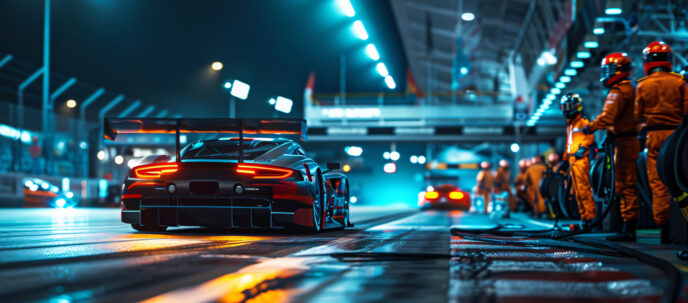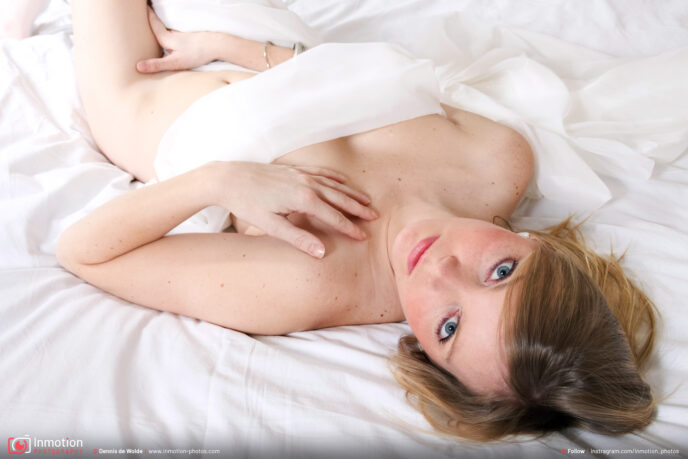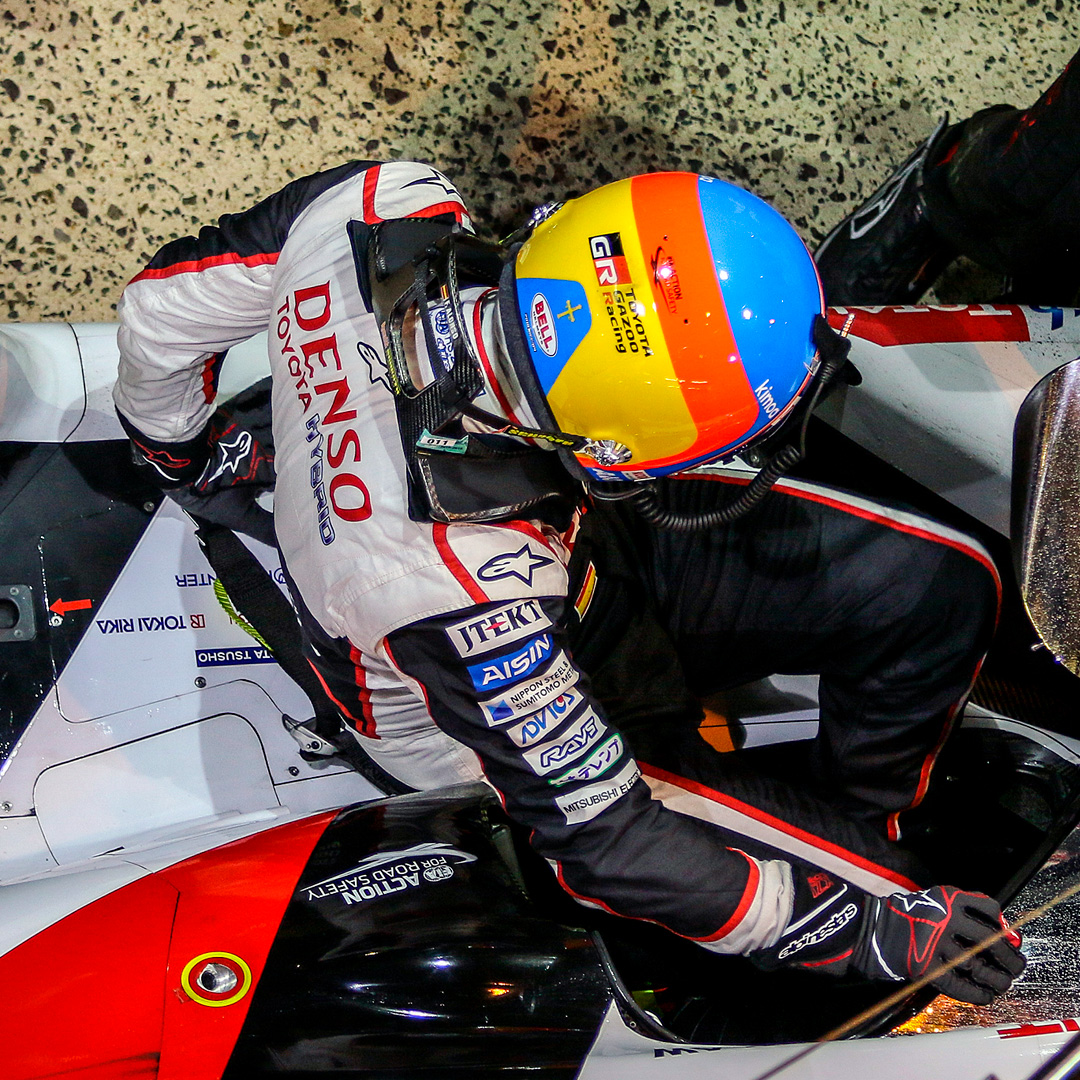What is panning?
Panning is when you follow a moving subject with your camera. By using a slightly slower shutter speed, such as 1/50th or 1/25th, and moving with the moving element, you blur the background while maintaining focus on the subject. The car is moving relative to the background and the wheels are also spinning. As the camera moves, the subject appears in the same spot on the sensor each time, while the background is blurred by the motion blur. A fast shutter speed, on the other hand, freezes the entire image and makes the subject appear to stand still. This technique is most commonly used by motorsports photographers who work at extremely high speeds. They use panning not only to create static images, but more importantly to make the speed understandable to the viewer.
Car with fast shutter speed
The car was photographed with a shutter speed of 1/1000, which makes it look like it is standing still. Although the car was actually moving quite fast, it does not really show in the picture. Because of the lack of speed, I call it a bad photo. It was a starting point for me in the beginning because I had not really mastered the panning yet and wanted to come home with some pictures where the car was sharp. But in order for the speed of the car to be reflected in the photo, we have to lower the shutter speed.

This photo already has much more sense of speed than the earlier photo. Why is that? The shutter speed of the above photo is 1/320. In that 1/320 of a second, the wheels turn and the car moves a little relative to the background. This results in a partially moving photo. Motion in the form of the spinning wheels and the background. Now, by moving with the car at the same speed, the car remains stationary relative to your camera’s image sensor. So the car is not moving in your photo, but the rest is. And this way you get a much better sense of speed in the photo.
So to get results you have to follow the car. The car moves horizontally, not vertically. Any vertical (i.e. up and down) movement you make will result in a vertical movement of the car while it is not there and thus a failed photograph. My way to stabilize this as much as possible is to stand in the final position where you want to photograph the car, and from there turn your upper body in the direction the car is coming from. This way you will be stable and your own movement will be natural. Some cameras and lenses have special stabilization for panning. This corrects small bumps, but not the overall smoothness of the movement. For smooth panning, some photographers find it helpful to use a monopod. This allows you to largely eliminate vertical movement and pan quickly and smoothly on one leg.
It also depends on the speed of the car. A slow moving car will not be moved as much with a shutter speed of 1/200 because the momentum is not as present in that 1/200. The important thing is to practice. You will find that eventually you will get the hang of it and be able to take your shutter speeds down a notch. A good place to start is around 1/320th of a second and gradually reduce your shutter speed.

Racing car with a really slow shutter speed
So it is important to have a stable position. After all, you will be turning with the car. So put your feet slightly apart and turn with your hips. Put your arms against your body so that everything is as stable as possible. Practice makes perfect, so in the beginning it is just a matter of perseverance.

And once you get the hang of it, you find that your shutter speeds can go down. This photo of Racing Team Nederland at Spa Francorchamps was taken at a shutter speed of 1/30th of a second. Good posture and enough practice can produce images like this. I think it is also important to show where I am. Eau Rouge, the old straight and the pit buildings are perfect for this kind of photography. The same goes for Le Mans, where I do the same thing with the recognizable Dunlop bridge in the background.
Panning is a basic technique in motorsports, but you don’t just have to photograph cars from the side. Even when cars are taking a turn, you want the wheels to be moving rather than standing still. Each photo becomes more dynamic. Only when a car is coming straight at me do I freeze the shot, because it makes no difference.

Finding the Right Settings
It is difficult to say what the right setting is because it depends on the amount of light available, the speed of the subject, and the length of the “turn. It usually works best to experiment on the spot. For example, start with a shutter speed of 1/320th and practice the movement a few times. Is the subject out of focus? Then you can practice your twirl even longer, or shorten the shutter speed anyway. Notice that the subject is in focus several times in a row? Then you can increase the shutter speed a bit to create more background blur. Focusing technique is also very much a matter of personal preference. Choosing a fixed autofocus point at the point where the subject appears on the sensor often works best, but many photographers also focus manually.

Once you know your settings are correct, it’s a matter of timing. You get the best background blur if you start the rotation first, then press the shutter, take the picture, close the shutter, and then finish the rotation. In other words, rotate longer than the selected shutter speed. This ensures that you are already “up to speed” and maintain a constant speed while the shutter is open.
Cars from the front
Don’t be blind to the panning technique when photographing cars. Just the side of a car quickly makes a series boring and monotonous. A variety of angles makes it more interesting. So try to include other elements of the car. For example, take a picture of the front of the car with several cars in the background. This image gives depth and dynamics while still being frozen. Also, don’t stay in one place all the time. Check out my Track Tips for great locations, and keep in mind that during a race, I pass by all the spots by default.
Show where you are
So try to be varied in the images you show of your riding. Try to show what is happening on the track. For example, show some of several cars combined with a section of the track. By choosing a wide focal point, you will not only capture many cars, but also a large part of the environment; in this case, the Zandvoort circuit. Also look at the atmosphere in the grandstands and capture that. For example, if you see someone making a video with their phone, capture that person’s image and make sure the car on the screen is also in focus. Be creative!

The perfect crop
There are some elements that bother me, but in general I think everyone should decide for their own photo what they like. One of the things I find distracting in a photo is when a car is not completely in the picture. I would never post a photo like that, even if it was the only photo that was in focus. Also, in the beginning I thought it would be very cool to show how sharp my photo had become, so I posted it as large as possible. There was very little space left around the object. Now I give the cars much more space and try to show some of the surroundings, but I still see a lot of beginning photographers making the same mistake. And dense parts, those big dark areas in a car, can bother me. I don’t like to have to correct for that either, because it makes the car look stuck in the photo.
The most important thing is to get flying hours, which means a lot of practice. You do not have to go to a track, you can practice all day long. Stand (safely) along a road or bike path and try to practice there. You can also use a running dog as a test object.








